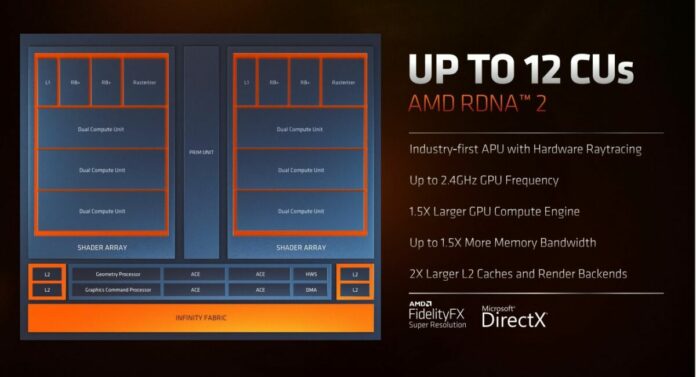Most of AMD’s focus in the early part of 2022 is in getting more Ryzen chips into laptops. We know this because the main thrust of year-starting CES presentation was Ryzen 6000 Series mobile.
Club386 took a deep dive into the technology powering latest-generation mobile APUs, codenamed Rembrandt, and concluded “a big part of why AMD chooses to keep the CPU semi-shackled rests with harnessing RDNA 2-class graphics for the first time.”
It’s this RDNA 2-infused IGP which largely separates one mobile generation from the next, and given the heritage, AMD expects the best-in-class graphics to offer playable framerates at FHD for popular eSports titles. Not only that, RDNA 2 also has on-paper chops to run some more demanding games, going by our analysis. Remember, too, RDNA 2 graphics are split into Radeon 680M for Ryzen 7/9 and Radeon 660M for Ryzen 5 chips.
Getting to the nub of the matter, a Lenovo engineer has posted detailed performance numbers for both RDNA 2 IGP variants, comparing them to established IGPs and, also, a low-end discrete card. Let’s take a gander.
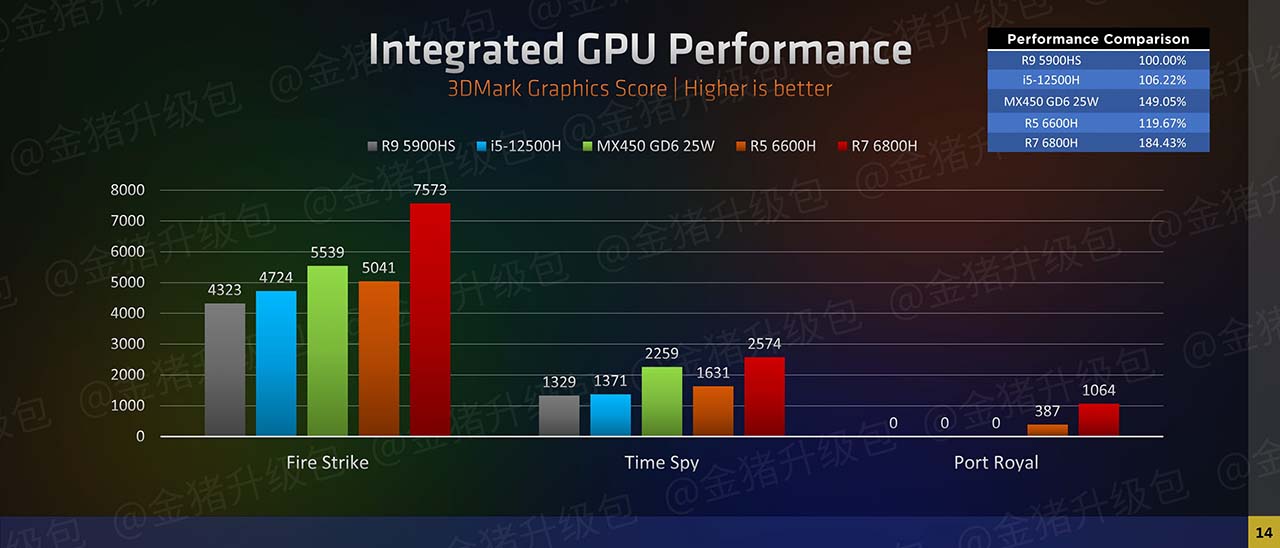
The two varieties of RDNA 2 IGP are represented by R5 6600H (660M) and R7 6800H (680M). As we predicted in our deep dive, comparisons show even R5’s performance is above the best of the last AMD mobile generation, shown in grey bars. Only 660M and 680M can run ray tracing, of course, hence why the other three comparisons score zero there.
Full-fat 680M is more impressive. It’s almost twice as fast as the Vega-class graphics in R9 5900HS, as AMD intimated, and actually quicker than an entry-level Nvidia GeForce MX450 plumbed with a 25W TDP.
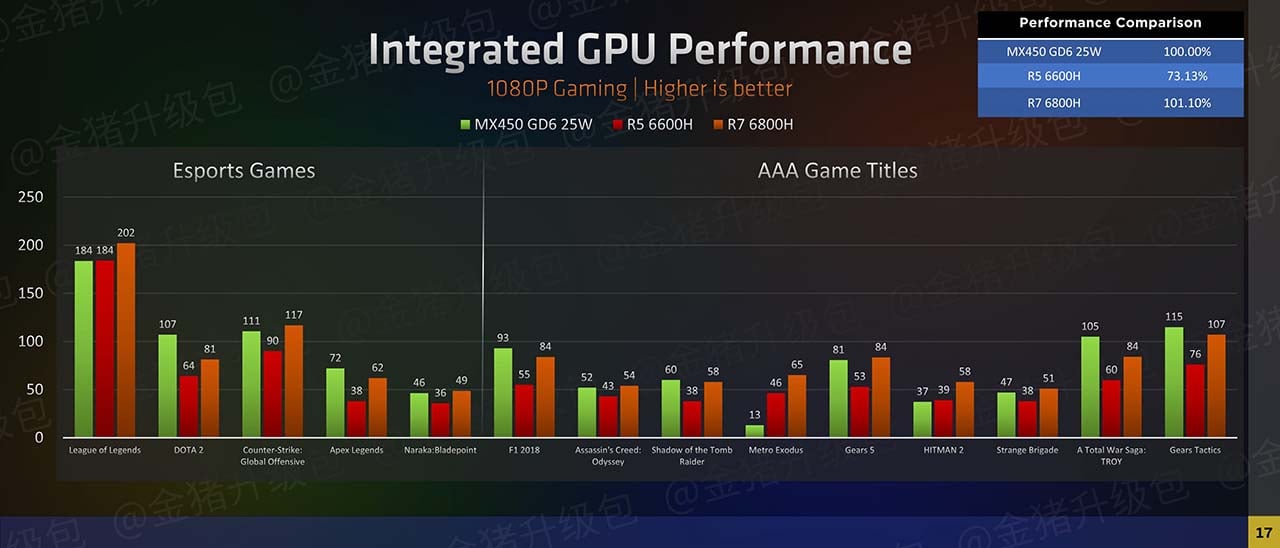
Moving on to real games, we only see comparisons against the aforementioned GeForce MX450. The overall conclusion is Radeon 680M more than holds its own, helped on through being serviced by fast memory, and numbers suggest FHD gameplay is possible on what we consider triple-A titles, albeit with quality turned down.
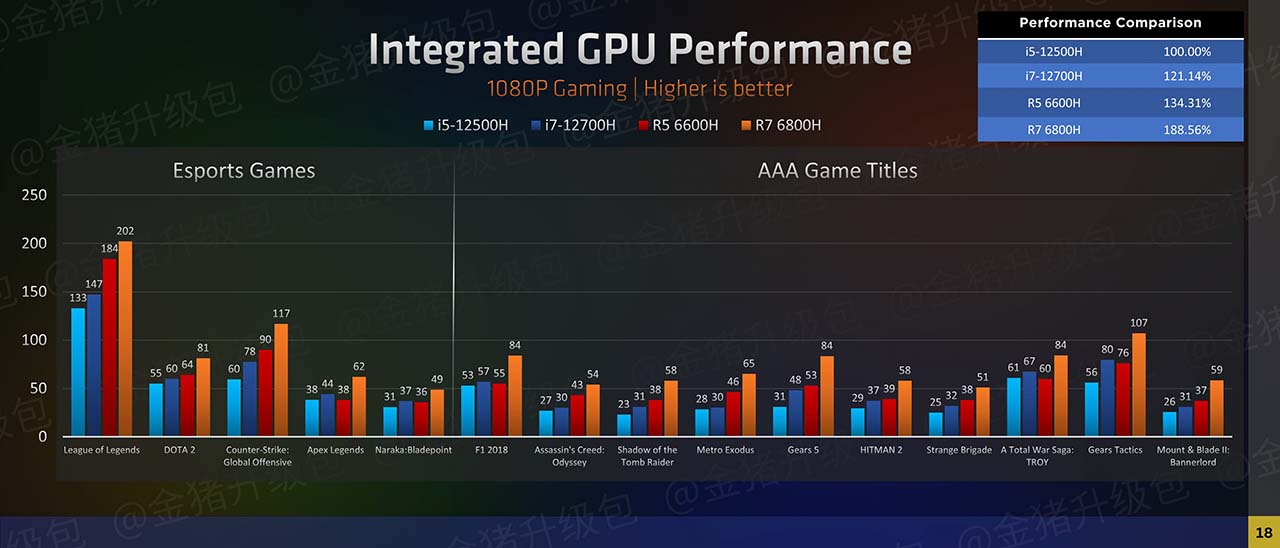
Compared to other integrated solutions, including the latest Intel 12th Gen in both Core i5 and Core i7 flavours, AMD’s integrated graphics are plain faster. This is wholly expected, of course, and brings the need for a low-end discrete GPU into sharper relief.
We can now see why AMD devoted a larger portion of the Rembrandt die to RDNA 2-class graphics; the Radeon 680M looks to be a decent performer.
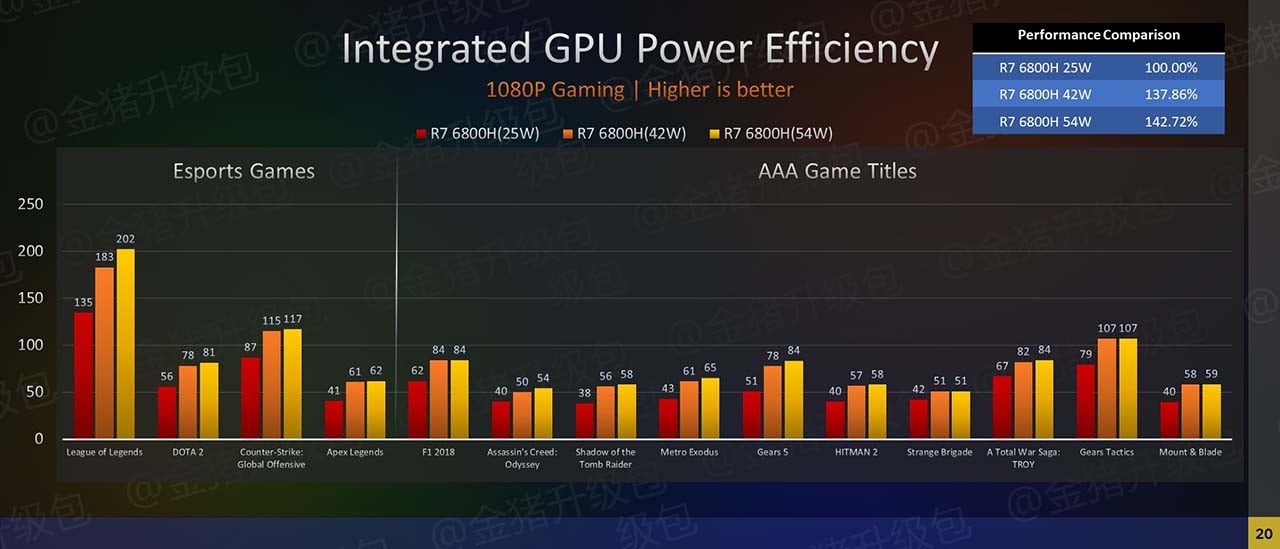
If you take a look back through the preceding graphs you will understand the R7 6800H chip is run at a 54W TDP. That’s a little on the high side as AMD specifies it with a base 45W TDP. OEMs can decide the exact power limits, as Lenovo has done here, but even reducing the chip’s overall power budget to 42W, which is below spec, doesn’t diminish integrated performance by a noticeable degree.
That 42W is a good sweet spot, balancing out thermals and performance, though reducing the power down to 25W, shown in the red bars, does have the effect of dampening framerate by a lot. In that case, Radeon 680M performs more like Radeon 660M.
Nevertheless, the first in-depth testing suggests AMD has done a good job in raising the bar, substantially, for integrated graphics.

